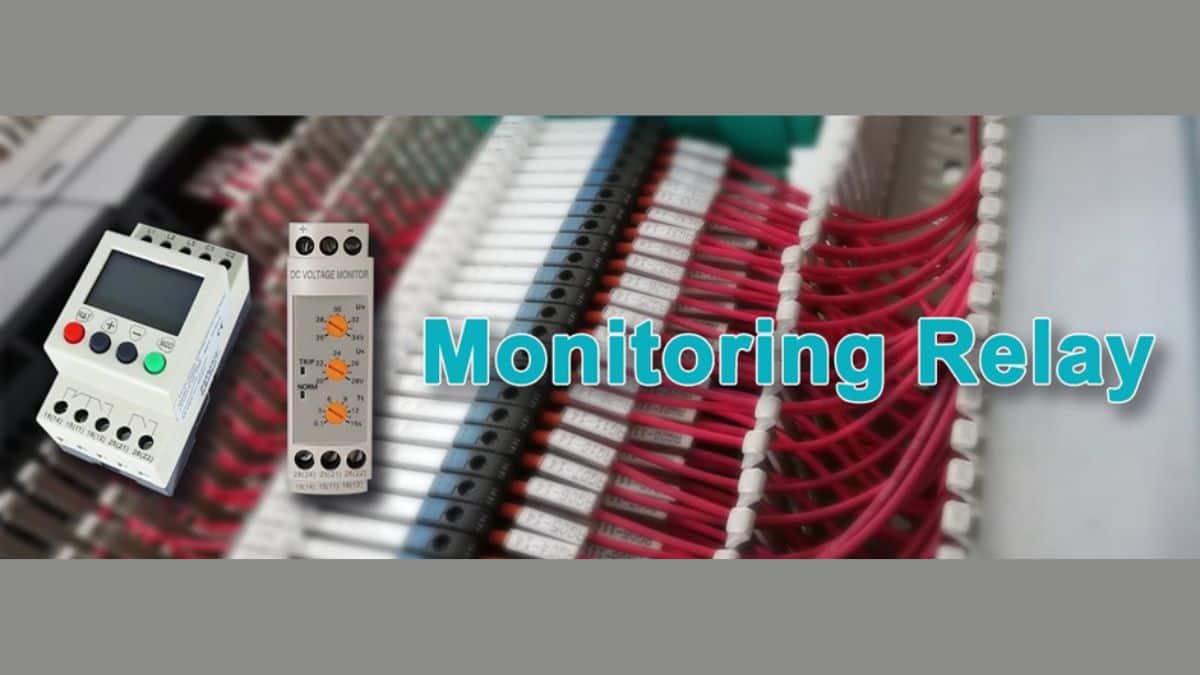It is impossible to exaggerate the value of monitoring relays in contemporary industrial operations. These compact but effective tools are essential for protecting equipment, boosting safety, and increasing operational effectiveness. Monitoring relays save expensive downtime, lower the risk of accidents, and increase overall production by continually monitoring numerous parameters and responding quickly to unexpected conditions. This essay will delve into the particular advantages of a highly regarded product provided by ATO Inc and examine the significance of monitoring relays in industrial applications.
Protection of Personnel and Equipment
In any industrial environment, safety is of utmost importance. Industrial settings are potentially dangerous due to the presence of heavy machinery, high-voltage electrical systems, and complex operations. Relays for monitoring serve as watchful gatekeepers, continuously keeping an eye on vital variables including temperature, current, voltage, and fluid levels.
These relays immediately activate security measures or alarm systems when they notice any departure from predefined thresholds. For instance, in a motor control application, a monitoring relay can shut down the motor before any serious harm is done if it detects an overload or phase imbalance. Similar to this, if the liquid level drops below a safe limit in a fluid level monitoring system, a relay can activate alarms or shutdown mechanisms, averting catastrophic spills or equipment damage.
This proactive strategy guarantees that possible risks are dealt with before they become more serious, minimising the chance of worker harm and preserving a secure workplace.
Minimizing Downtime and Maintenance Costs
Downtime that is unplanned is a major risk in industrial operations. It results in decreased production as well as higher maintenance expenditures. By seeing early indications of equipment faults or unusual behaviour, monitoring relays play a critical role in resolving this problem.
A monitoring relay, for instance, in a pump system, can identify motor overheating or the presence of airlocks, enabling maintenance workers to take corrective action before the pump entirely fails. Monitoring relays assist businesses in maintaining continuous operations and achieving production goals by averting costly repairs and minimising overall downtime.
Monitoring relays can also help with preventative maintenance procedures. They offer useful information for condition monitoring by continuously monitoring equipment characteristics and performance trends. This information can be used by maintenance staff to plan preventive maintenance operations, such as replacing components before they break. This anticipatory method further cuts unnecessary downtime and lowers repair expenses, resulting in significant cost savings for industrial operations.
Enhancing Energy Efficiency
Modern industrial practices must prioritise energy efficiency in order to cut operational expenses and lessen environmental effect. By maximising the utilisation of resources, monitoring relays greatly improves energy efficiency.
A monitoring relay can identify ambient light levels and modify artificial illumination in applications like lighting control. This guarantees that lights are only turned on when essential and cuts down on wasteful energy use. Monitoring relays in an HVAC system have the ability to control temperature and air flow, maximising energy efficiency and producing a cosy and effective environment.
Monitoring relays assist businesses in reducing their carbon footprint and supporting sustainable and ecologically friendly operations by promoting energy-saving techniques.
Spotlight on ATO DC Voltage Monitoring Relay
ATO DC Voltage Monitoring Relay stands out as a dependable and effective device for industrial applications among the variety of monitoring relays that are offered. This relay, which is intended to monitor DC voltage levels, has a number of functions that make it an invaluable tool for assuring efficiency and safety.
Wide Voltage Range: The relay can monitor a variety of DC voltages, making it appropriate for a variety of industrial applications that make use of DC power sources. The DC Voltage Monitoring Relay from ATO Inc can precisely handle a range of voltage levels, whether it is a small control circuit or a high-power application.
Customizable Thresholds: With the relay’s customizable settings, users may quickly establish the desired voltage thresholds to suit their particular equipment and system needs. This adaptability enables the monitoring parameters to be tailored for the best performance for various industrial processes.
Which voltage monitoring relay is the best?
There are a few factors that can assist you in deciding if it is the greatest option and will function properly. These relays are produced by a number of firms, and one of them is the GIC voltage relay, which contains features not found in other brands. For instance, it can be adjusted for time delay, which makes handling sudden and brief variations easier.
How to Get the Best Performance?
When you pay attention to them and employ some strategies that work with them, you can get the most out of your relay. You must first ascertain whether the workplace has a single-phase or three-phase supply. The number of output relays needed in your application can then be determined.
Then comes the crucial portion; be sure to identify the most crucial function, such as whether you want to control overvoltage or undervoltage or whether phase loss is required or whether there is a probability of neutral loss. Understanding these specifications will enable you to get the most out of your voltage relay.
Conclusion
In today’s industrial settings, monitoring relays serve as essential defenders of production, effectiveness, and safety. They keep a close eye on vital variables like temperature, current, voltage, and fluid levels, and they ensure quick response to departures from the standard to avoid accidents and protect both people and equipment. ATO DC Voltage Monitoring Relay is a perfect example; it is a flexible device with a wide voltage range and programmable thresholds.
The selection of a proper voltage monitoring relay becomes increasingly important as industries develop. Adjustability for particular needs and integration with different power sources are factors to be taken into account. Industries may get the most out of the relay’s performance and value by matching its features to the demands of a given application. In essence, monitoring relays become crucial allies that promote efficiency, economy, and safety throughout the large spectrum of modern industrial endeavours.


